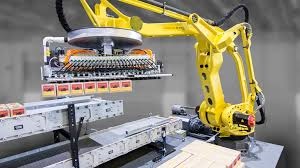 The number of part handling robots used in injection molding facilities continues to grow. Twenty years ago, seeing a multi axis robot in a molding facility was almost unheard of. This new technology was used only by the biggest injection molders with large, multi-year contracts. In those days, high startup costs, potential downtime, reliability, and safety concerns were always carefully considered before robotic automation was implemented on the production floor.
The number of part handling robots used in injection molding facilities continues to grow. Twenty years ago, seeing a multi axis robot in a molding facility was almost unheard of. This new technology was used only by the biggest injection molders with large, multi-year contracts. In those days, high startup costs, potential downtime, reliability, and safety concerns were always carefully considered before robotic automation was implemented on the production floor.
Today, as we enter a new decade, those apprehensions have gone away. With huge economic and technological gains in servo-motors, controls, ease of programming and overall robot speed and accuracy, more injection molding companies have acquired robot automation.
In most cases, whenever part handling robots are used, there is a need for at least one conveyor for every robot. To eliminate the need for a safety cage, many times the robot will operate overhead where there is no need to include a cage surrounding the robot. The robot deposits the parts onto a conveyor system that will convey the parts down to an operator, where they can handle the parts at an optimal ergonomic level. Another common scenario is to have the robot unload the parts at table top height. At this height, a safety cage must surround the robot for the protection of shop personnel. The robot deposits parts onto the conveyor inside the safety cage. The conveyor then moves the parts outside the safety zone to an operator or another conveyor that takes the parts to a downstream process.
There are two specifications you will want to look for when researching to find the ideal conveyor system to integrate with your part handling robot. First, make sure the conveyor manufacturer offers a wide variety of widths. You will want to be assured that the conveyor you select will accommodate the size(s) of your parts. Second, if you are looking to design your system without the need for a safety cage, you will want to find a conveyor manufacturer who offers a Z configuration (horizontal to decline to horizontal). Using one Z configuration conveyor will eliminate the need to have multiple conveyors incorporated together for bringing your parts to an optimal working level.
Keep in mind that choosing the right conveyor system will play a big part in lowering your costs and increasing your efficiencies when incorporating part handling robots into your injection molding process.
- Buy a Conveyor or Not: When is it Time to Buy a Conveyor? - December 6, 2022
- Dynamic Conveyor Introduces New Modular, Powered Roller Conveyor for End of Line Solution in Manufacturing - May 20, 2022
- How to Reduce Conveyor Maintenance Costs - September 30, 2020

